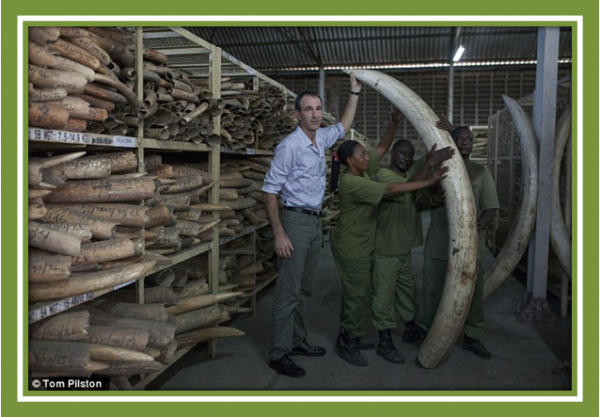|

Keep it fresh
A recent article in Wildlife News indicated that UK Africa Minister Mark Simmonds “assured the Tanzanian government that the UK would help it to maintain and store the vast ivory stockpile.”
This stockpile is supposed to measure 137 tonnes of tusks.
But let’s take a few steps back to look at what facts are available for this apparent UK government decision:
- Prior to the CITES Conference of Parties in Bangkok, Tanzania put in a bid to be able to sell their ivory stockpiles.
- One of the reasons given was that there was considerable expense associated with “maintaining” the warehouses and “ensuring” security - “There are costs associated with storage and stockpiling ivory. The longer the stockpile remains under storage the more its quality and therefore value declines. On the other hand, costs associated with collection, storage and management of the stockpile continues to increase. Such costs, which include also 24 hours surveillance, fumigation and monitoring, stand at about USD 100,000 per year. Besides, with over 100 tonnes the present strong room is full. This calls for another building as more ivory will keep on being collected. Building a new strong room shall cost over $ 1 million excluding the cost of acquiring a construction plot.This comes with added costs of providing security and maintenance. Clearly this money could be better used in other more important conservation activities.”
- The CITES proposal was withdrawn, but then Tanzania sought other avenues to gain finance.
- In February 2014, the President of Tanzania attended the London Summit on the Illegal Wildlife Trade. There was some controversy. After all, this same president was backing a highway through the Serengeti and a uranium mine in the Selous Game Reserve, a UNESCO world heritage site. Not surprisingly the media provided this report
- At the Summit, President Kikwete agreed to some sort of level of non-trading. Many secondary reports came out – and it seems most likely that Kikwete agreed to stop ivory trading proposals for about 10 years – in return for concessions. This is the way politics works – we all know very well the old adage – “if you rub my back I’ll rub yours”…
- So – did the UK agree to pay to maintain the cost of the ivory stockpile – a considerable concern expressed by Tanzania as a reason to sell it – as a means of ensuring Tanzania’s promise not to raise the ivory sale issue for another ten years?
- The mind boggles. I will remind you of a 1938 statement by UK Prime Minister Neville Chamberlain who said “Peace for Our Time” after the Munich Agreement to appease Germany to annex parts of Czechoslovakia. A year later Germany invaded Poland and started WWII.
- Is this “Peace for Our Time” for ivory just for an equally short time? Tanzania meanwhile is contesting a USFWS moratorium on elephant trophy hunting imports into the USA – the USFWS calling trophy hunting “not conducive to conservation”. It does not look good for Tanzania’s political will to do better to conserve remaining elephant populations.
So, where do we go from here? Tanzania as a sovereign nation is free to do with its ivory stockpile as it wishes. Selling it on the international market – China- is not going to be allowed by CITES anytime in the future. Meanwhile the UK seems to agree to provide funding to maintain the warehoused ivory under the best possible conditions.
Also meanwhile, living elephants are being poached out of existence in Tanzania. It is alleged that authorities know the identities of the poaching kingpins. But they will not act against them as they might be embarrassingly connected to the highest levels of government.
I for one will contact Mark Simmonds to ask for further clarity on this issue. He spends UK taxpayer money on a scheme not even vaguely known to UK taxpayers. And that is an issue even bigger than an elephant.
Picture credit: Tom Pilston
If you have not already signed up to our mailing list, you can add your name here and keep up to date with our ongoing work and, most importantly, DONATE to support our work to conserve the remaining fragile lion populations. Thank you.
|




